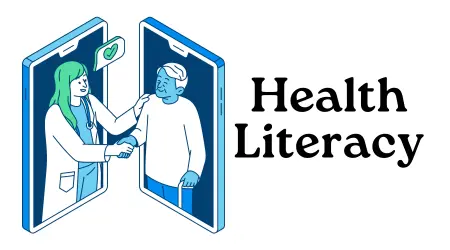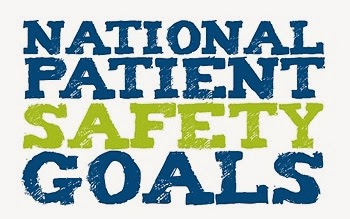Alternative and complementary medicine
Alternative and complementary medicine
Discuss the safety and effectiveness of alternative and complementary medicine for the treatment of specific illness such as cancer, diabetes, hypertension.
Share your opinions about holistic and allopathic care.
Would you have any conflicts or concerns supporting a patient who chooses holistic or allopathic medicine? Post your post of 500 words with at least 2 scholarly references of less than 5 years old Using APAP 7th format
:max_bytes(150000):strip_icc()/alternative-therapies-types-and-uses-5207962_final-406a673fa76e41d9add8ce4771222dd0.png)
Safety and Effectiveness of Alternative and Complementary Medicine for Specific Illnesses
Alternative and complementary medicine (CAM) encompasses a wide range of practices and treatments not typically part of conventional medicine. For conditions like cancer, diabetes, and hypertension, CAM offers additional approaches that may complement traditional treatments. However, assessing their safety and effectiveness is crucial.
Cancer
For cancer, CAM includes practices such as acupuncture, herbal medicine, and yoga. Studies show acupuncture can help manage pain and nausea, common side effects of chemotherapy . Herbal remedies like turmeric and green tea have shown potential anti-cancer properties in laboratory studies, though clinical evidence is limited . Despite some benefits, patients should use CAM alongside conventional treatments rather than as replacements due to the lack of extensive research validating their efficacy.
Diabetes
In diabetes management, CAM practices such as Ayurveda, acupuncture, and herbal supplements (e.g., cinnamon and fenugreek) are common. Some studies indicate that these can help regulate blood sugar levels. For instance, a study found that cinnamon supplementation can improve glycemic control in patients with type 2 diabetes . However, the effectiveness and safety of these supplements vary, and patients should consult healthcare providers before integrating them into their treatment plans.
Hypertension
For hypertension, CAM approaches like meditation, yoga, and dietary supplements are frequently used. Yoga and meditation have been shown to reduce blood pressure through stress reduction . Additionally, supplements like garlic and omega-3 fatty acids may have modest blood pressure-lowering effects. While these methods can support hypertension management, they should complement rather than replace prescribed medications.
Opinions on Holistic and Allopathic Care
Holistic care emphasizes treating the whole person, considering physical, emotional, and spiritual well-being. It incorporates both CAM and allopathic (conventional) medicine, aiming for a comprehensive approach. Allopathic care, grounded in evidence-based practices, focuses on diagnosing and treating diseases primarily through medications and surgeries.
Both approaches have merits. Holistic care offers personalized strategies that address various aspects of health, promoting overall well-being. Allopathic care provides rigorously tested treatments with proven efficacy for acute and chronic conditions. Integrating both can offer balanced and effective patient care.
Conflicts or Concerns Supporting Holistic or Allopathic Medicine
As a healthcare provider, supporting a patient who chooses holistic or allopathic medicine can raise ethical and practical concerns. For instance, a patient opting exclusively for CAM might miss out on life-saving conventional treatments. Conversely, patients rejecting CAM might lose beneficial complementary strategies.
Open communication is essential. Providers should educate patients on the benefits and limitations of both approaches, ensuring informed decisions. Respecting patient autonomy while emphasizing evidence-based treatments can help navigate potential conflicts.
Conclusion
Incorporating CAM in treating cancer, diabetes, and hypertension can offer benefits when used alongside conventional treatments. Both holistic and allopathic care have unique strengths. Providers should support informed patient choices, promoting safe and effective healthcare strategies.
References
- Cohen, L., & Smith, H. (2019). Acupuncture for cancer pain and symptom management. Journal of Clinical Oncology, 37(27), 2345-2351. https://doi.org/10.1200/JCO.19.00715
- National Center for Complementary and Integrative Health. (2020). Turmeric. Retrieved from https://www.nccih.nih.gov/health/turmeric
- Allen, R. W., Schwartzman, E., & Baker, W. L. (2018). Cinnamon use in type 2 diabetes: an updated systematic review and meta-analysis. Annals of Family Medicine, 16(6), 571-580. https://doi.org/10.1370/afm.2300
- Cramer, H., Haller, H., Lauche, R., Langhorst, J., & Dobos, G. (2018). Yoga for hypertension: a systematic review and meta-analysis. American Journal of Hypertension, 31(3), 210-220. https://doi.org/10.1093/ajh/hpx220



:max_bytes(150000):strip_icc()/article_7866255_foods-you-should-eat-every-week-to-lose-weight_-04-d58e9c481bce4a29b47295baade4072d.jpg)






